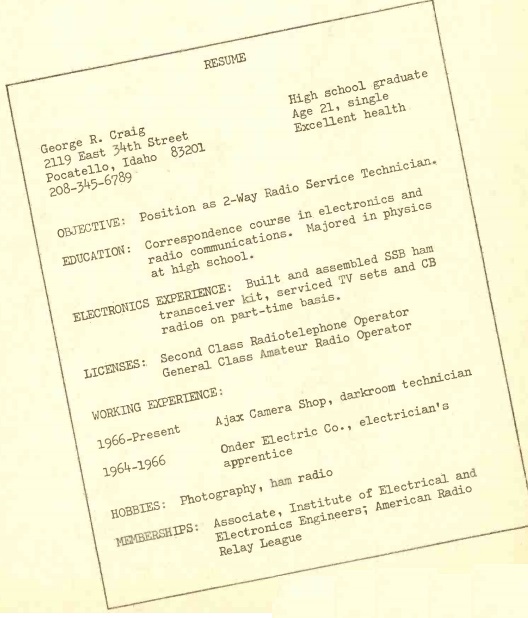 Fifty years ago this month, the September-October 1967 issue of Elementary Electronics told a young man just how to build the impressive resume shown here, in order to “make a mighty buck as a ticketed tech.” The article explained how possession of the “ticket,” a second class radiotelephone operator license, along with a bit of skill, could open the possibilities of a career as a two-way radio technician.
Fifty years ago this month, the September-October 1967 issue of Elementary Electronics told a young man just how to build the impressive resume shown here, in order to “make a mighty buck as a ticketed tech.” The article explained how possession of the “ticket,” a second class radiotelephone operator license, along with a bit of skill, could open the possibilities of a career as a two-way radio technician.
Jobs were available with service shops, manufacturers, police and fire, railroads, or other employers. Or, with a bit of experience, a young man could start his own shop and go into business for himself. Five million licensed transmitters were in operation, and all of them required service by a licensed technician.
For those with some electronics knowledge could study for the exam by themselves. Or those starting from scratch could enroll in a correspondence course.
To build experience, the article advised “get a novice ham license (very easy to do), buy a second-hand FM mobile radio unit or base station, and modify it for operation in the two-meter ham band. Also, but a ham rig kit–preferably an SSB transceiver, because SSB will be in wide use in the future. In short, get plenty of practice building, tuning and using two-way radio and thus get the most mileage from your ham ticket.”
The result of this preparation would be an impressive resume similar to the sample shown above. What employer wouldn’t jump at the chance to hire a general class ham, complete with membership in the ARRL.
With those preliminaries out of the way, it was time to get a job. Those who didn’w want to relocate could send resumes to shops in town, to the police and fire departments, and other large two-way radio users. Or for those who wanted to venture out to the possibility of relocating, the article provided addresses of where those resumes could be sent. It even suggested putting a “situation wanted” ad in a professional magazine.
